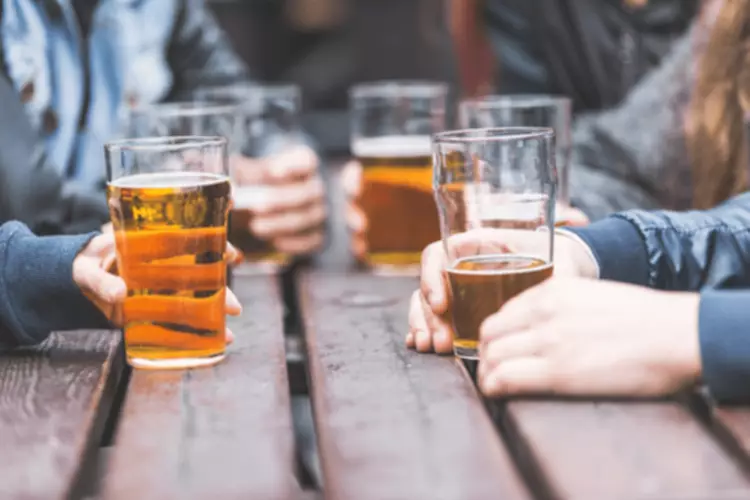Content
Therefore, psychological and physiological dependence should probably not be perceived as entirely separate entities, but rather two sides of the same coin. In fact, most modern evidence-based treatments are based on the understanding that there some crucial distinctions. The contemporary definition https://ecosoberhouse.com/article/total-alcohol-abstinence-vs-moderation/ of alcohol dependence is still based upon early research. Direct2Recovery specializes in management and treatment options for substance use disorder; alcohol, opiates, heroin and other harmful substances. See the website for more information about dependency subjects and treatment options.
Hypercortisolism can occur in chronic alcohol misuse, both while drinking and during withdrawal (discussed below), and it increases levels of excitatory amino acids such as glutamate within the CNS, further leading to tolerance and withdrawal symptoms. Estimates of the heritability of alcohol dependence generally vary between 50% and 60%. To date, most of the implicated genes are involved in the metabolism of alcohol, personality traits or neuronal transmission in the GABA, opioid, dopaminergic, cholinergic or serotonergic systems. Some genes have been implicated in predisposing the individual to developing dependence, whereas others are considered to be protective. Such genes interact with other biological, psychological, social and environmental factors in determining the development of alcohol dependence. People who have a physical dependence on a substance, such as drugs or alcohol, will experience withdrawal symptoms when they stop using the substance or reduce the amount of substance used.
What Are Some Alcoholism Causes And Risk Factors?
The dopaminergic and noradrenergic systems are both up-regulated in alcohol dependence, thus contributing to tolerance during periods of drinking and to withdrawal symptoms, secondary to their neuronal excitation, when alcohol levels are reduced. Overstimulation of noradrenergic neurons during periods of lowered blood alcohol is the cause of well-recognised symptoms such as tremor, diaphoresis, anxiety and agitation, as well as signs such as tachycardia and hypertension. It is further enhanced by both the state of increased glutamate function and the loss of noradrenergic autoinhibition caused by reduced presynaptic α2 adrenoceptor function (Reference Nutt, Adinoff, Linnoila and GallanterNutt et al, 1988).
Your culture, religion, family and work influence many of your behaviors, including drinking. Family plays the biggest role in a person’s likelihood of developing alcoholism. Children who are exposed to alcohol abuse from an early age are more at risk of falling into a dangerous drinking pattern. Also, physical dependence can occur without addiction—this is the common experience for many chronic pain patients physiological dependence on alcohol who continue to take their opioid medications as prescribed for an extended period but don’t experience unmanageable compulsions or a loss of control. Genetic, psychological, social and environmental factors can impact how drinking alcohol affects your body and behavior. Theories suggest that for certain people drinking has a different and stronger impact that can lead to alcohol use disorder.
Back to Mental Health
Not everyone with alcohol dependence, therefore, experiences physiological dependence. Alcohol dependence is differentiated from alcohol abuse by the presence of symptoms such as tolerance and withdrawal. Both alcohol dependence and alcohol abuse are sometimes referred to by the less specific term alcoholism. However, many definitions of alcoholism exist, and only some are compatible with alcohol abuse. There are two major differences between alcohol dependence and alcoholism as generally accepted by the medical community.
- Craving was added as a diagnostic criteria and at least two target conditions are now required for diagnosis of AUD.3 New International Statistical Classification of Diseases and Related Health Problems (ICD) 10 codes that correspond to DSM-5 will be used beginning in October 2014.
- The 2010 WHO Global strategy to reduce the harmful use of alcohol is the most comprehensive international alcohol policy document, endorsed by WHO Member States, that provides guidance on reducing the harmful use of alcohol at all levels.
- Lecoultre and Schutz (2009) studied a group of well-trained male cyclists to determine the effects of an acute consumption of alcohol on cyclists during a 60-minute cycling endurance performance test.
- There are two major differences between alcohol dependence and alcoholism as generally accepted by the medical community.
- Also known as self-help groups, peer support groups, and mutual aid, mutual help organizations are for the most part peer run volunteer organizations that focus on socially supportive communication and exchange of addiction and recovery experiences and skills.
- Firstly, physiological dependence does not necessarily mean you or a loved one has a substance use disorder.
Talk to your patients about both the negative physical and psychological effects of alcohol misuse. If you have a patient who is in need of treatment for alcohol abuse, do not hesitate to recommend our alcohol rehabs. The sooner an individual receives treatment, the less likely there will be lasting negative effects. Look for a treatment program that is prepared to address both the physical and psychological needs of each patient.
What is considered 1 drink?
Repeated episodes of withdrawal symptoms, as may occur during repeated detoxifications, can be detrimental to the CNS, a process known as ‘kindling of withdrawal symptoms’. Among other effects, such as increased anxiety, withdrawal seizures have been shown to become more severe with this epileptic kindling effect (Reference Becker and LittletonBecker & Littleton, 1996). Proposed mechanisms underlying these harmful kindling effects include repeated bouts of excitatory-induced neuronal cell death, along with repeated episodes of lability of the hypothalamus–pituitary–adrenal (HPA) axis. Other risk factors underlying alcohol-related seizures include structural brain lesions, use of illicit substances and pre-existing epilepsy. This latter finding suggests that elevated alcohol self-administration does not merely result from long-term alcohol exposure per se, but rather that repeated withdrawal experiences underlie enhanced motivation for alcohol seeking/consumption.
